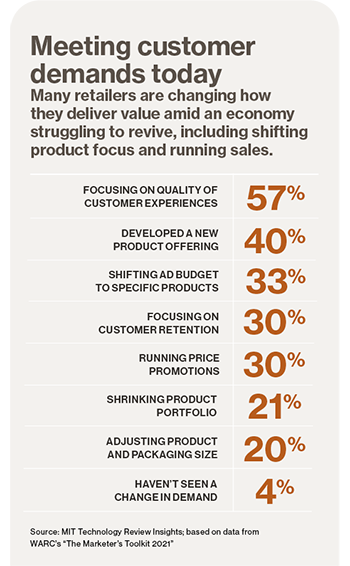
In 2008, I purchased my first digital outfit. I gave little thought to the significance of my decision. It was just one aspect of Maplestory, the free online role-playing game my friends and I were obsessed with. The game’s objective was to embark on a heroic adventure, and our virtual avatars had to be properly equipped for the journey. That meant swords, shields, capes, and all sorts of fantastical attire.
The most eye-catching virtual clothes and accessories cost actual cash, not in-game money, which I would buy with allowance money from my parents. The individual items were available for purchase in the “cash shop,” and cost from $1 to $10. They didn’t help defend against enemies or bestow extra power; they existed to serve a solely aesthetic purpose by covering up unwieldy battle regalia.
The clothes were also programmed to expire after 90 days. In hindsight, their semi-permanent nature was a prelude to the ephemeral fashion environment I would grow up in. But all that mattered then was that, for about three months, my pixelated self hunted monsters in virtual cat ears, pink sunglasses, and a flouncy black dress. It was a form of virtual dress-up that was playful and liberating. I had the autonomy to dress however I desired within the confines of this virtual world.
Digital fashion, as of late, is often discussed in tandem with the metaverse, a sci-fi concept turned omnipresent buzzword that has been touted as the future of the internet. In Mark Zuckerberg’s metaverse, for example, we will all have little stand-ins for ourselves, loitering around the digital landscape. These virtual avatars will work at virtual jobs, attend to virtual social obligations, and wear virtual clothes. How this Ready Player One-like world will come together is still extremely unclear.
To this end, Silicon Valley has been trying to convince Americans to think seriously about — and put real money toward — things that seem more or less fake. Compared to something as speculative as non-fungible tokens, digital fashion seems relatively easy to understand. Most people can grasp, for instance, designing an avatar for a video game, like The Sims. Your virtual self needs to get dressed; nudity is not programmatically allowed.
Digital fashion, however, is not limited to clothing for avatars. It’s a growing fashion subculture that includes the digital design and modeling of real-world clothing, the uploading of designs for real and digital clothing onto the blockchain (so these files can be sold as NFTs), and even digital clothes rendered onto real people.
There’s a belief that digital fashion could one day eclipse people’s needs for real, tangible clothes. Outfit repetition will become an outdated concern, the thinking goes, since digital-only clothes exist solely for sartorial performance and self-expression, beyond the constraints of physical reality. (Metaverse garments can be fantastically impractical: Think flaming capes, billowing glass-blown dresses, and cloud-like outerwear.)
This perspective, however, seems primarily held by individuals and startups that stand to make lots of money from digital fashion’s rising profile. Fashion has always been in the business of selling fantasies. Is this particular one, though, just another distraction from the wider fashion industry’s very real problems? Proponents of digital fashion claim that it has the potential to be profitable, practical, creatively rich, and sustainable. Much of that remains up for debate. We are, after all, still confined to our flesh-suits.
Digital fashion is all style and, quite literally, no substance
Daniella Loftus, founder of the digital fashion blog This Outfit Does Not Exist, categorizes digital fashion on a spectrum with varying physical and digital properties. Per Loftus’s definition, “any worn article created in the digital realm” can fall under this label. That includes purely physical pieces designed with software or digital collectibles with physical counterparts; virtual clothes that are “worn,” or edited, on images and videos of real humans; and fully digital garments sported by avatars, powered by video game developers (Activision Blizzard, Epic Games, Sony) or social networks (Snap, Meta).
“My prediction is that retailers are going to start investing in better software and technology,” Loftus said. “The first step will be ‘phygital.’” Phygital, a jargony portmanteau of physical and digital, is used to describe real-world experiences with digital components, from fashion shows to retail shopping.
It’s no coincidence that fashion has initially staked its virtual turf through video games, a form of entertainment that, according to the New Yorker’s Anna Wiener, “train[s] players to be eager, expectant, and constant consumers.” Massively multiplayer online games like Fortnite and Roblox are one lucrative avenue to reach millions of young, international consumers. The $40 billion market for in-game items is tantalizingly profitable, and producing digital goods requires relatively low production and labor costs. Prior to the pandemic, Louis Vuitton released a League of Legends capsule collection with character skins (outfits worn by playable characters), and Moschino launched a collection inspired by The Sims that could be purchased and worn in the game.
Mainstream interest in NFTs has only expedited this interest in gaming and virtual worlds. More brands are seeking out collaborations with esports teams, game developers, and gaming consoles, or launching exclusive collections and pieces in certain games. It’s an interesting turn of events for an industry worried about revenue loss from declining pandemic sales. Here is an opportunity for well-funded brands — many with the financial means to weather Covid-19 uncertainty while smaller stores shuttered — to bring in sales and customers without any physical products at all.
Luxury fashion has boasted of a distinctively creative digital approach. An up-and-coming generation of designers and artistic directors have liberally experimented with emerging technologies in recent years, in ways imaginative and practical, but also occasionally questionable. Recall Balmain’s “virtual army” of supermodels, consisting entirely of three digital, multiracial women, built on a shockingly narrow standard of beauty. Or Calvin Klein’s poor attempt at mimicking queer allyship by having Bella Hadid, a real heterosexual woman, kiss Lil Miquela, a virtual influencer who is presumably bisexual for marketing purposes, while #InTheirCalvins.
Once fashion’s regular shows were paused by the pandemic, digital experimentation became more practical, although no less visually eccentric. Hanifa designer Anifa Mvuemba drew press attention in May 2020 for simulating her spring runway show with 3D modeling technology, which was broadcast on Instagram Live. Last June, Balenciaga’s Demna Gvasalia also hosted a “deep fake of a fashion show,” and cast a CGI version of the painter Eliza Douglas for the virtual catwalk.
Virtual fashion proponents emphasize that there is more to the technology than flashy marketing ploys. The 3D design software used by brands like Burberry, Calvin Klein, and Tommy Hilfiger, they claim, can optimize the production of physical garments by reducing excess waste during the design and fitting processes. Digital prototypes can minimize the number of samples produced for merchandisers and promotional use. New styles can be digitally reproduced, or “tailored,” onto the bodies of models (virtual and physical), celebrities, and influencers. On the customer end, improvements in augmented reality also can help buyers visualize and virtually “try on” products before they’re even manufactured.
Since NFTs have gone mainstream, more retailers are partnering with — or in the case of Nike, acquiring — startups that specialize in designing virtual fashion and digital collectibles. Adidas, as part of its “Into the Metaverse” project, is collaborating with various NFT collectors and artists, including Bored Ape Yacht Club, to offer “community members” (read: NFT owners) exclusive merchandise and access to “virtual land experiences.” These projects are usually marketed to a growing (albeit niche) base of upwardly mobile cryptocurrency enthusiasts. Yet, they are often lauded by the fashion press and venture capitalists as innovative endeavors — for establishing new notions of “community” between a brand and its buyers, or as the crypto cognoscenti likes to claim, for democratizing traditionally gate-kept spaces like art and fashion.
These corporate-backed projects have largely overshadowed the independent digital fashion scene, which, to its credit, has a comparatively low barrier to entry. Any artist can produce a virtual fashion collection with minimal financial resources. The space, in contrast to the fashion world’s historic exclusivity, has attracted independent graphic designers without a formal background in clothing design. These creators treat their virtual-only “clothes” as art-like commodities, but unlike traditional fashion designers, are not restricted to the contours of physical reality. Their genderless, sizeless works can forsake human anatomy altogether. Take, for example, the glistening, sea urchin-like coat designed by Toni Maticevski and digital fashion startup The Fabricant, which Australian Fashion Week attendees could virtually try on.
A brief scroll through DressX, a marketplace for digital-only fashion goods, offers another glimpse of the avant-garde experimentation at hand. These conceptual, physics-defying looks, while striking, aren’t able to be “worn” in a traditional sense. After a customer purchases a garment — which can cost as little as $30 and as much as $9,500 — they send in an image or a video of themselves for the outfit to be rendered on. The end result can vary depending on the level of digital craftsmanship involved (which often correlates with the price). Realism is not the point, according to its proponents. What matters is the emotion that these clothes evoke. “Fashion is an emotional experience,” The Fabricant’s Michaela Larosse told Vogue. “And you don’t need physicality for that.”
What puzzled me about Larosse’s statement, at least with this current iteration of digital fashion, is how the wearer would consistently have these feelings. Emotions are instinctive. They could be genuinely reciprocated through an avatar for the brief time that I am plugged into a video game or a digital world. But the spontaneous, corporeal joy I derive from draping myself in soft silk is unlikely to be replicated with a digital stand-in, especially not through an edited photo.
To quote Ye, there is something magical and strangely addictive “about the way clothes fit and feel and the emotion that they give you.” With digital clothes and collectibles, there is no real-time rush of confidence, no twirl of exhilaration. These designs, after all, are digital files for public consumption without any material indulgence. The wearer has to pose for a photo or video without a clear idea of how the garment will flow. “You kind of have to guess how the outfit is going to look on you later,” according to one photographer. “It isn’t particularly easy to take a photo without the outfit you’re going to be wearing in it.”
It is idealistic but ultimately short-sighted to think the fashion industry can innovate itself out of a longstanding environmental crisis. Digital fashion will not outpace the physical clothing market anytime soon, if ever at all. Virtual clothes cannot be slotted into our closets as functional substitutes, unlike switching out whole milk for oat milk.
Fashion’s stakeholders have rarely taken responsibility to right its structural wrongs. Instead, as Washington Post critic Robin Givhan observed, more of the industry’s problems are “caused by short-term fixes instead of long-term strategies, the belief in quantity over quality and, of course, ego and inertia.”
Fashion companies have already invested in artificial intelligence and machine learning technologies across the board to ensure supply chains move faster and more accurately. In fact, the speedy state of fashion is enabled by digital tools that can forecast trends, predict consumer behavior, and automate the checkout process. Nothing in fashion’s track record suggests that the onset of digital-only fashion will change this. Sure, fewer resources might be deployed in the making of a virtual garment, thereby making the process much more “sustainable.” Still, these clothes, if minted into NFTs, are not without their own carbon footprint.
As industry standards evolve, Loftus predicts that more physical projects will be designed via software and come with a “digital backend.” Designers and retailers, then, can easily upload their work online or to the blockchain and sell designs as NFTs. What remains unclear is whether blockchain technology can effectively mitigate fashion’s (questionably legal) copycat tendencies or, for that matter, any of the problems that have plagued it for decades.
The novelty — of digital fashion NFTs and the metaverse — has so far largely served as a nifty marketing diversion for the industry. Brands can claim to be investing in more sustainable technologies while maintaining their breakneck production speeds. They can fundraise for socially responsible causes with NFTs while outsourcing labor to countries where garment workers struggle to earn a living wage.
So long as our physical bodies take precedence over a virtual alternative, digital clothes and accessories are only a supplement to our teeming tangible closets. The physical world still imposes its demands on us, no matter what virtual realms we plug into during our free time. We still have to get dressed.






